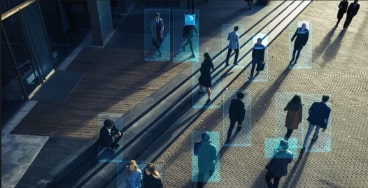The Kremlin is spending millions of dollars on facial recognition-powered surveillance that can track its citizens. A new cache of leaked documents has now revealed the extent of involvement of biometrics companies such as NtechLab in the project and how the system will be managed.
The Russian government’s 12 billion rouble (US$129.6 million) plan to create a nationwide system for storing and processing data from all surveillance cameras in Russian cities has been public for some time. In November last year, the Russian Ministry of Digital Development said that by 2030 the number of CCTV cameras in the country will grow to 5 million and all of them will be connected to AI systems capable of processing the video stream.
The government’s announcement came amid intensifying crackdowns on Russian activists, journalists and members of the opposition who have been arrested thanks to facial recognition cameras.
Leaked documents have now revealed more details on the project to centralize Russia’s surveillance, including that the system will be handled by the Russian Presidential Affairs Department’s Scientific Research Computing Center (GlavNIVTs). The “semi-covert agency close to Russia’s intelligence services” will be handling the nationwide system for storing and processing data from all surveillance cameras in Russian cities, according to Russian independent news outlet Meduza. The documents from Putin’s administration were obtained by the Estonian news agency Delfi Estonia at the end of 2023.
Budget plans show that GlavNIVTs will rely on software and licenses from NtechLab and Gigarama, a company that creates high-resolution panoramic photos. NtechLab, which was sanctioned by the European Union in July 2023 for its role in persecuting Russians evading military duty, has been supplying Russian city authorities with facial recognition technology for public surveillance.
GlavNIVTs will handle two projects related to building up surveillance in the country, a Video Stream Processing Service and a Video Stream Processing Center. Both are intended to“promptly identify threats” and “destructive and/or disloyal behavior.” The processing service will collect and store video using AI for primary processing while the processing center will aggregate the processed data to look for “objects of interest.”
GlavNIVTs was allocated a total of 3.88 billion roubles ($42.6 million) for the two projects, around 21 million rubles ($230,790) less than originally planned.
According to government announcements from November, the federal Video Stream Processing Service will be directly connected to regional video surveillance systems. These will rely on three categories of cameras: The first type will be intended for areas with large crowds and will tackle crowd control while the second will be focused on roads and railway crossings and will be equipped with license recognition software. The third type of camera is intended to recognize individuals and are designed to “build biometric templates of people’s faces” and will be installed by the FSB, Internal Affairs Ministry, and an “authorized body.”
Experts cited by Russian newspaper Kommersant said that the budget allocated by the Russian Ministry of Digital Development for centralizing surveillance in the country will likely be insufficient.
Article: Leaked documents reveal details on Russia’s upcoming surveillance system
